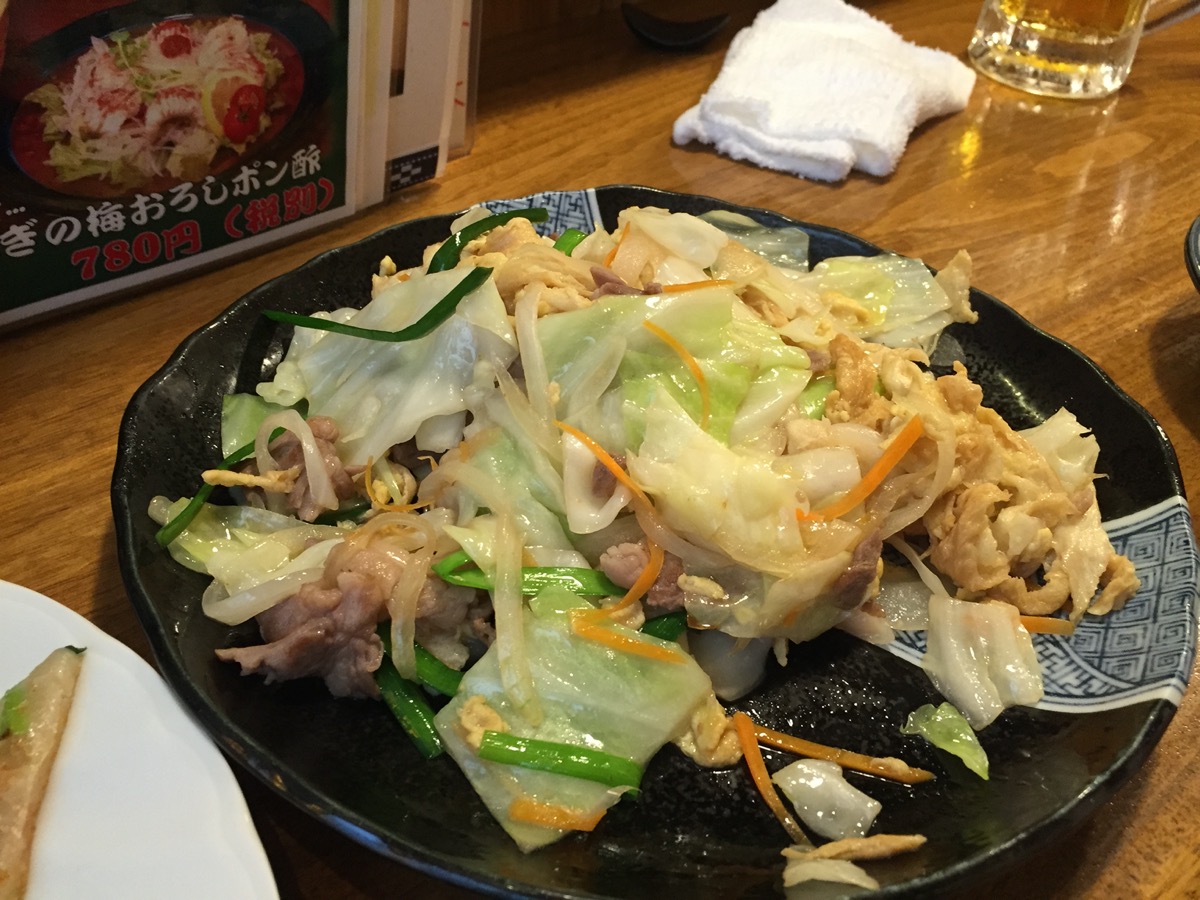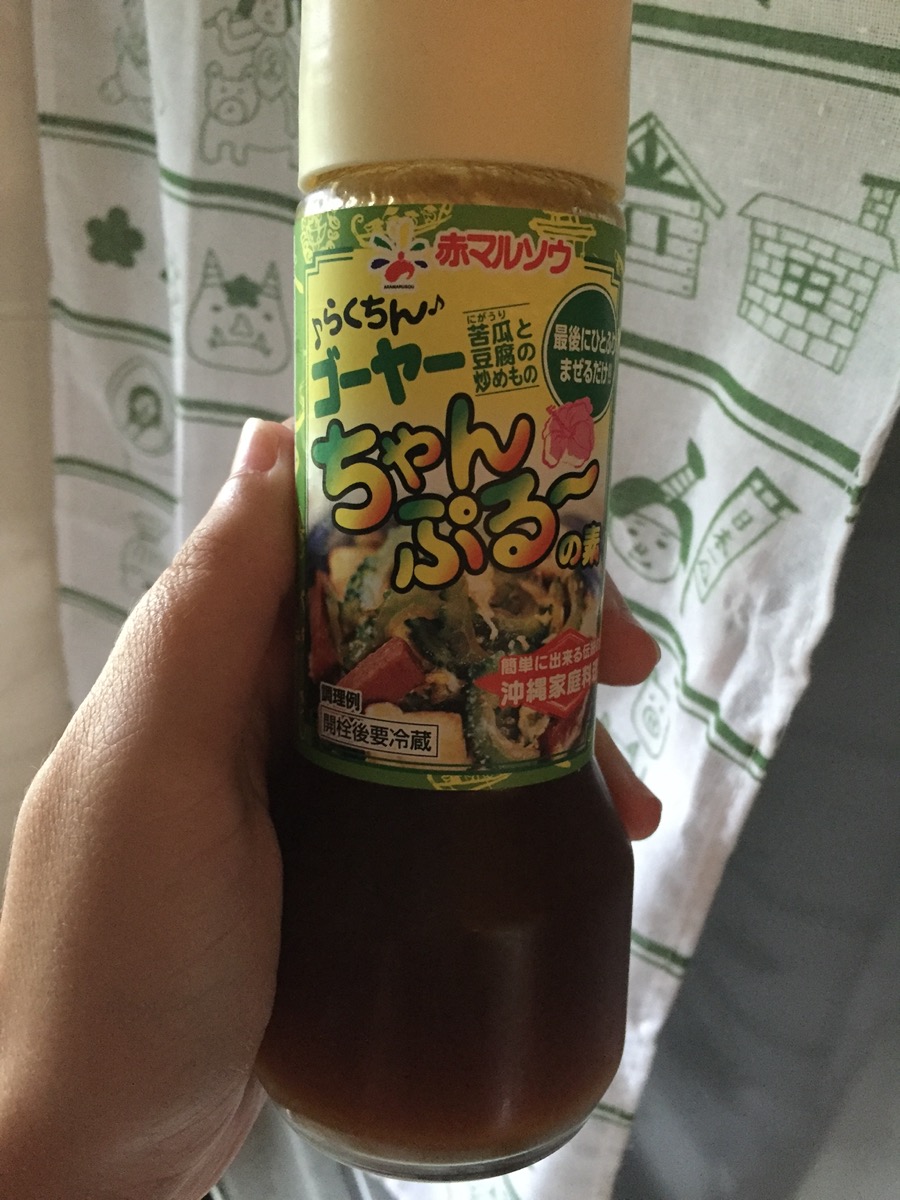チャンプルー chanpuru means something mixed in Okinawa language. In Okinawa, there is “chanpuru culture” because there are so many different influences (American, Chinese, Japanese and traditional Ryukyu).
Chanpuru is a classic Okinawan dish that is stir-fried. There are many types of chanpuru, each featuring different foods. Typically some vegetables are stir-fried with a bit of egg, spam (or maybe pork), and tofu. Some dishes have bean sprouts, some have green onions, some have carrot or cabbage… I notice there are not a lot of “hard and fast” rules when it comes to chanpuru. The sauce is some combination to your taste, involving shoyu, dashi, cooking sake, and perhaps miso. Again, everyone obaasan has her own recipe. Otherwise, in grocery stores here in Okinawa, you can actually buy a sauce in the bottle. I was gifted some by one of my ladies. She had heard how much my husband loved goya and thoughtfully put together a Christmas gift basket of foods for us.
Goya chanpuru: probably the most “popular.” It is sort of the quintessential Okinawan dish, using the classic goya (bitter melon) as the center of the stir-fry, alongside some tofu, egg, spam and maybe some other veggies.
Fu chanpuru: fu is an interesting thing. It is usually long tubes of wheat gluten, often bits are added to miso soup here in Okinawa. It is very cheap, available in all grocery stores, and no real taste so it really soaks up whatever flavors you cook with. It has quickly become a favorite for my husband as it is fairly low in calories and takes on so much flavor of what it is cooked with. He has taken to ordering it at local shokudo where the waitress will sometimes look at him funny; I assume most large American gentlemen are not inclined to order it normally. But seriously, what starts as completely tasteless turns into a really flavorful food that soaks up a ton of sauce and seasoning. 
Somen chanpuru: somen そうめん are simply very thin noodles. So this is essentially noodles stir-fried with sauce and vegetables. The taste is very different than yakisoba, though, so don’t get your hopes up. It probably my least favorite of the chanpuru variations, but still, the taste is okay. They just don’t soak up the flavor like fuu does.
Tofu chanpuru: The other chanpuru only have a bit of tofu, so this version has a lot of tofu. It is probably what you would expect, large bits of tofu with some vegetables with pork or spam in sauce.
Hechima chanpuru: this one is actually pretty rare to find, but I have seen it on occasion. I mean, it is hechima (loofah in English, nabera in Okinawan) so it really is not so popular, even among Okinawans.
For those of us in Okinawa, making chanpuru could not be easier with the widespread availability of all the ingredients. There is even a chanpuru sauce sold in grocery stores (if you do not want to bother making your own).

One thought on “Chanpuru: チャンプルー”
Comments are closed.